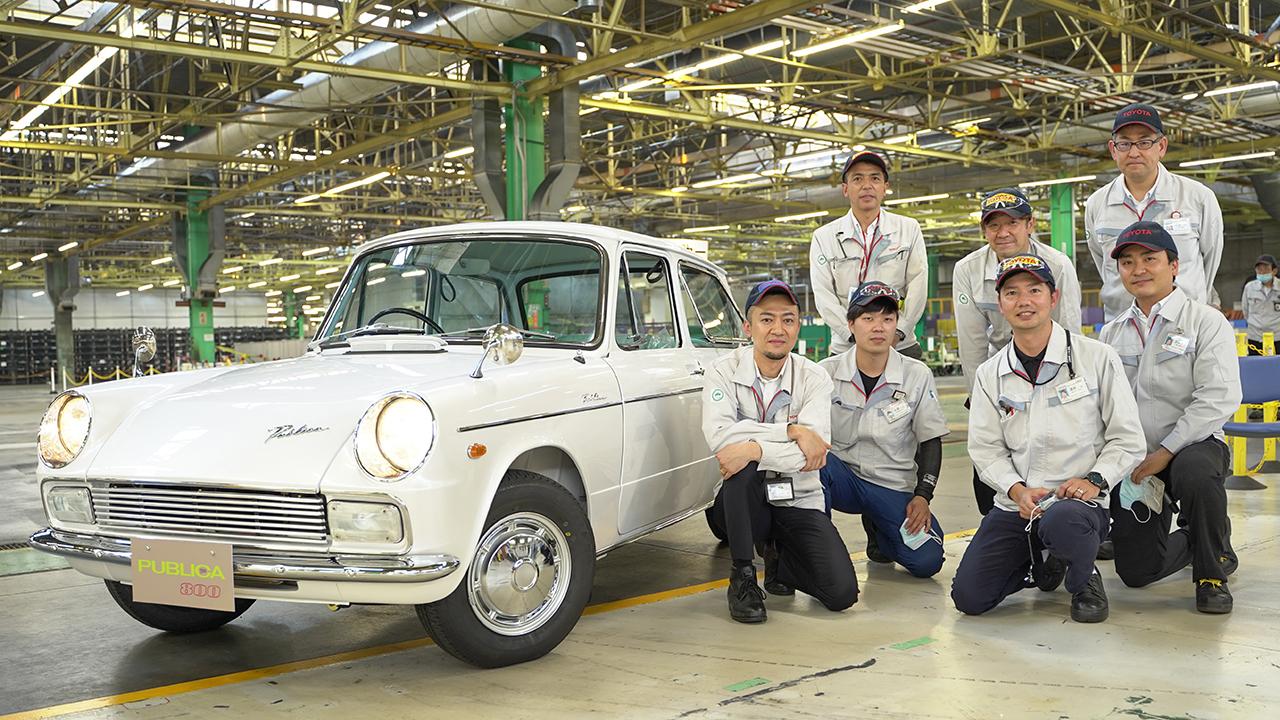
This series explores the project to restore a first-generation Crown, a car that embodies Toyota's origins. Part 2 covers the Publica restoration project that served as a stepping stone to the Crown.

The automotive industry is undergoing a once-in-a-century transformation. At Toyota Motor Corporation, unprecedented and groundbreaking initiatives have been launched in every department. A project to restore the first-generation Crown started in the spring of 2022 at the Motomachi Plant, bringing together a diverse group of skilled members. This series closes in on the restoration efforts, with Part 2 looking at the group that conceived the project and laid the groundwork.
Starting with the Publica
The team behind the first-generation Crown restoration project consists of 56 members, including the three leaders who spoke at the kickoff event. Most have no restoration experience. This project, however, was not planned on a whim. In fact, it was inspired by another restoration endeavor that led the way in 2021.
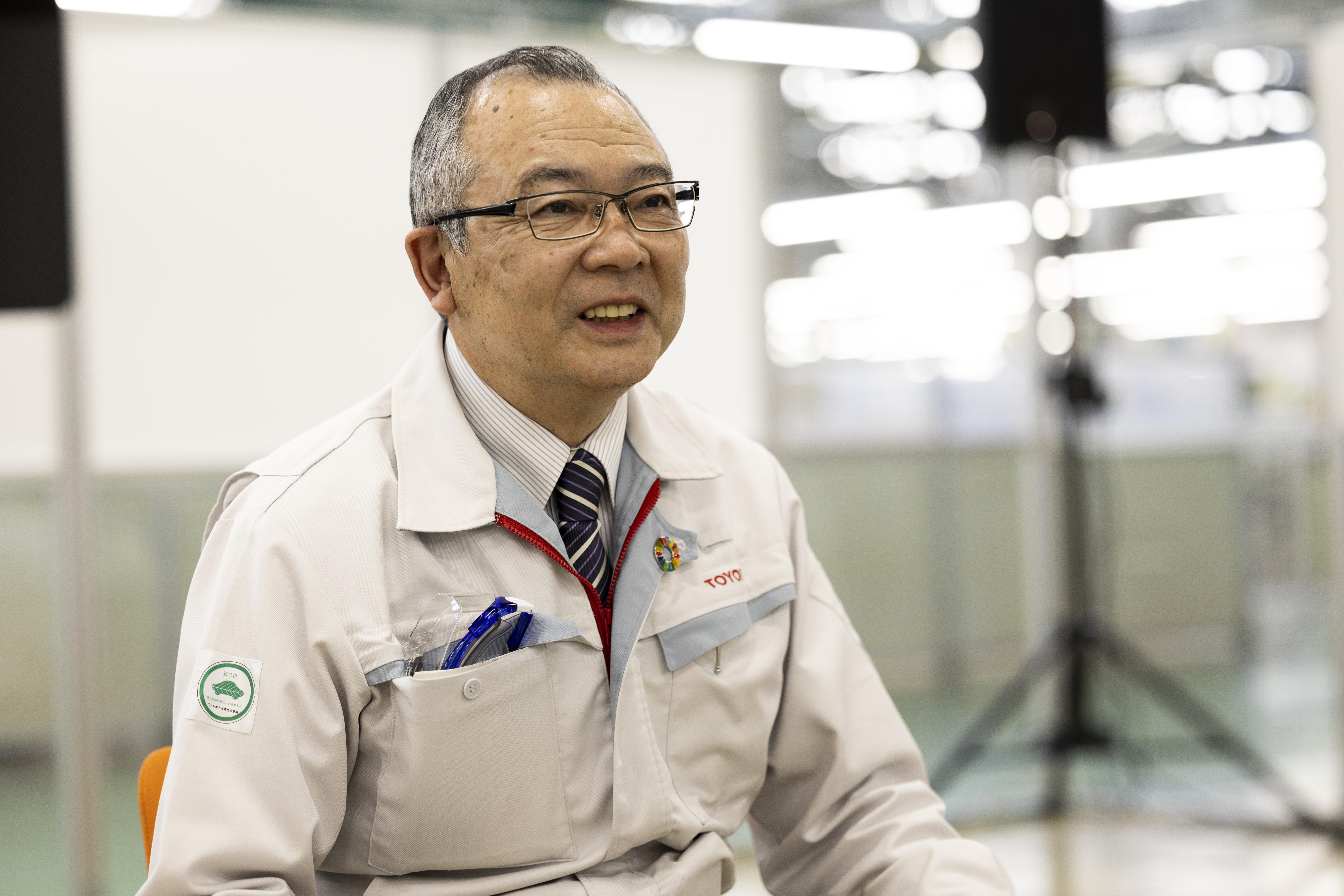
That pioneering work was the Publica restoration project, led by Kamigo and Shimoyama Plant General Manager Tomihisa Saito. His team included Reo Saito, Kinji Tomiyasu, Kazuya Komi, Shigeki Nakao, Daishi Nagahara, and other staff from the plant’s Engine Manufacturing Engineering Division.
Their efforts are what started it all. These are the people who championed a return to Toyota’s origins by ensuring that skills are passed down as the company transitions to being a mobility provider. They also launched, and continue to support, the current project to restore a first-generation Crown.
So how did this Publica restoration come about? What did members get out of the project, and how is it shaping the Crown’s restoration? Toyota Times spoke with the team to find out.
Toyota’s classic car buffs come together
It all began in 2017. As part of an in-house venture program, classic car enthusiasts from all over the company gathered to figure out what Toyota as a manufacturer could offer customers who want to continue driving their beloved classic vehicles. Led by Tomiyasu, they passionately discussed and tried out various ideas. Among the group was Reo Saito, who would become one of the project’s core members.

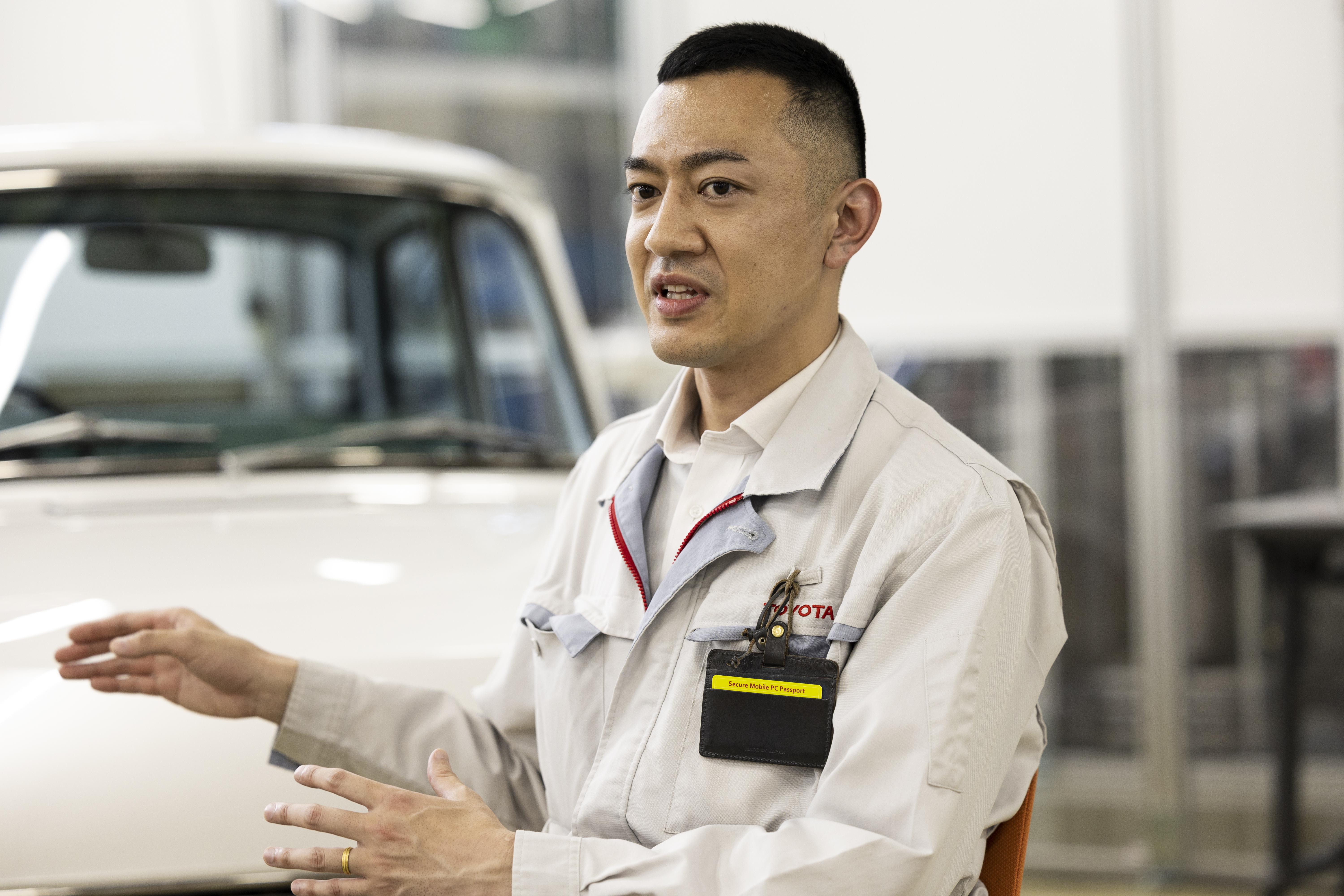
Tomiyasu is a devoted fan of Toyota and classic vehicles, and his love of cars traces back to the family Toyota of his childhood. Thinking it might be unwise to turn what you love into a job, Tomiyasu began his rather unusual career path at a major construction firm. Eventually, his passion for cars won out and he moved to Toyota. He describes his experiences as a classic car devotee.
Tomiyasu
Europe’s global carmakers have well-established support systems to keep old cars on the road. They continue to supply many parts so that owners can continue to drive their favorite cars for many years. Could we do that with Toyota cars? Compared to other manufacturers, the supply of parts for old Toyota cars is really limited. Personally, when I tried to restore old Celicas and Supras I had a very hard time sourcing parts. These experiences led me to explore ways of solving the challenges faced by Toyota fans and customers around the world.
Reo Saito is another core member of the team, who oversees planning, strategy, and PR for the Crown restoration project.
Reo Saito
Old cars have an inherent ability to make people happy. I used to drive one myself (a Publica 1200), and I would get comments from old and young alike, even children. The classic car culture was created not by manufacturers, but by the customers who bought the cars and other people outside the company. I believed in the potential of connecting this with other cultures and creating something new for the future. I felt sure that we as carmakers could contribute in some way to this wonderful culture.
Reo Saito, Tomiyasu, and their colleagues had long visited classic car events and garages renowned for restoring Toyota cars. They spoke with people who continue to drive cherished old Toyotas or hope to prolong the lives of vehicles that are filled with memories.
Tomiyasu
At this rate, those wonderful Toyotas made in bygone days will not be around for future generations. The classic car culture that our customers created will die out. As someone who loves old cars, I wanted to do something about it, and that’s why I proposed ideas for Toyota to try.
Unfortunately, Tomiyasu and Reo Saito’s various ideas for helping people prolong the lives of their beloved cars struggled to get off the ground. Regardless, they and other like-minded enthusiasts at Toyota did not give up.
After repeatedly honing their ideas, Reo Saito and his colleagues settled on a “trial restoration” that would give them firsthand experience of customers’ needs and concerns. The project finally gained approval in late 2020 thanks to assistance and advice from many people within the company.
The project kicked off in January 2021, headed by Toshihiro Izumi, then General Manager of the Engine Manufacturing Engineering Division, and General Manager Junji Yokota. Along with Reo Saito and Tomiyasu, they assembled a working team that included Komi, Nakao, and Nagahara.
Reo Saito
From that time, we had our sights set on restoring a first-generation Crown, the car born out of Kiichiro Toyoda’s passion that is the root of Toyota’s vehicles today. However, restoration requires skills and expertise that are completely different from car-making. Before tackling the Crown, with all its historic value, we felt we needed to start by restoring another car to clearly understand the work and challenges involved.
For this test restoration, the team wanted a Toyota from the 1950s or 1960s, around the production period of the original Crown. Preferably, this car would also be similarly iconic. They considered going for a Sports 800, affectionately known as the “Yota-Hachi.”
While searching for a suitable car to restore, team members chanced upon a 1966 Publica 800 Deluxe standing on a grassy lot beside a national highway. However, everything from the body to the seats and engine was in a terrible state.
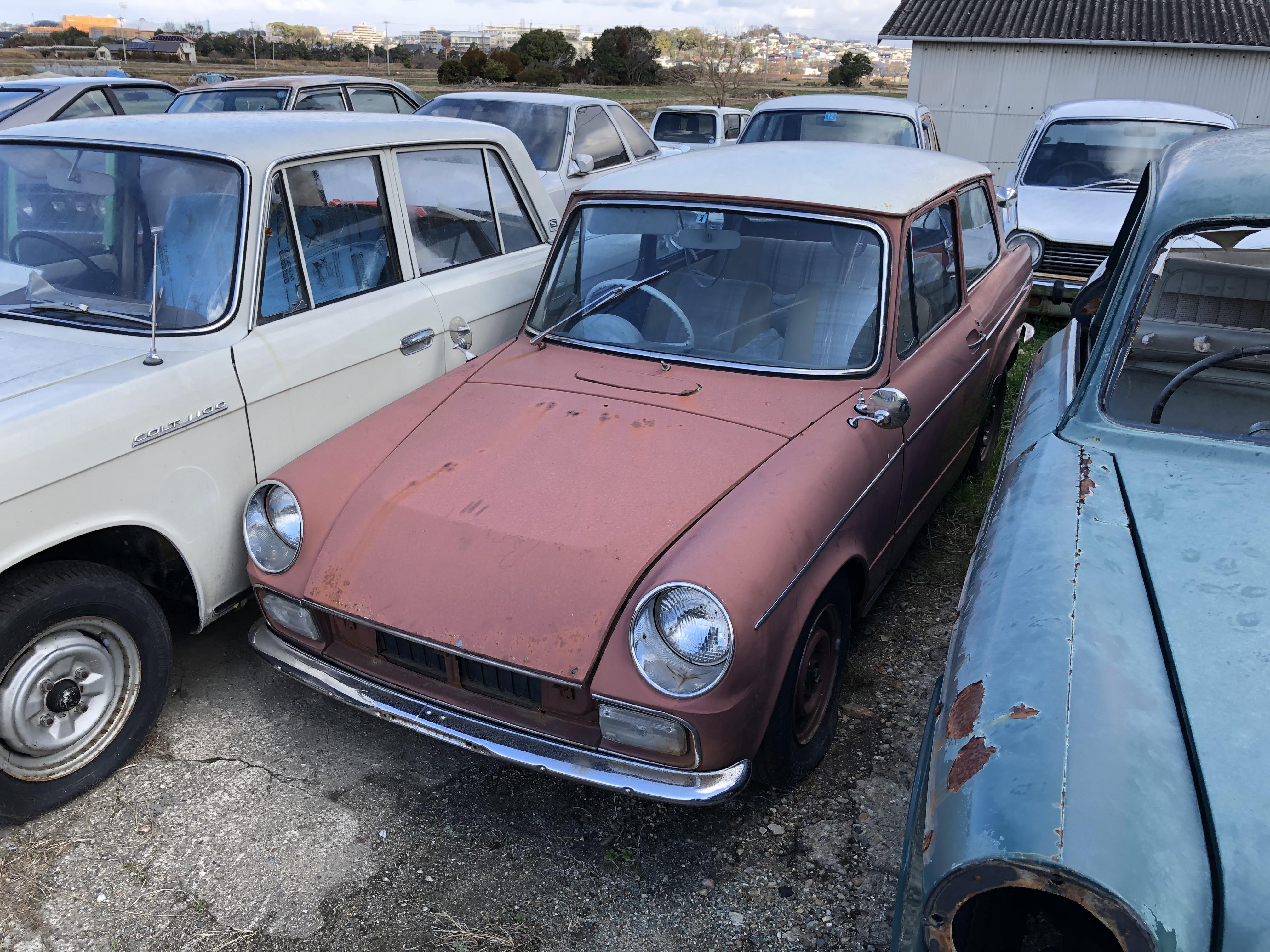
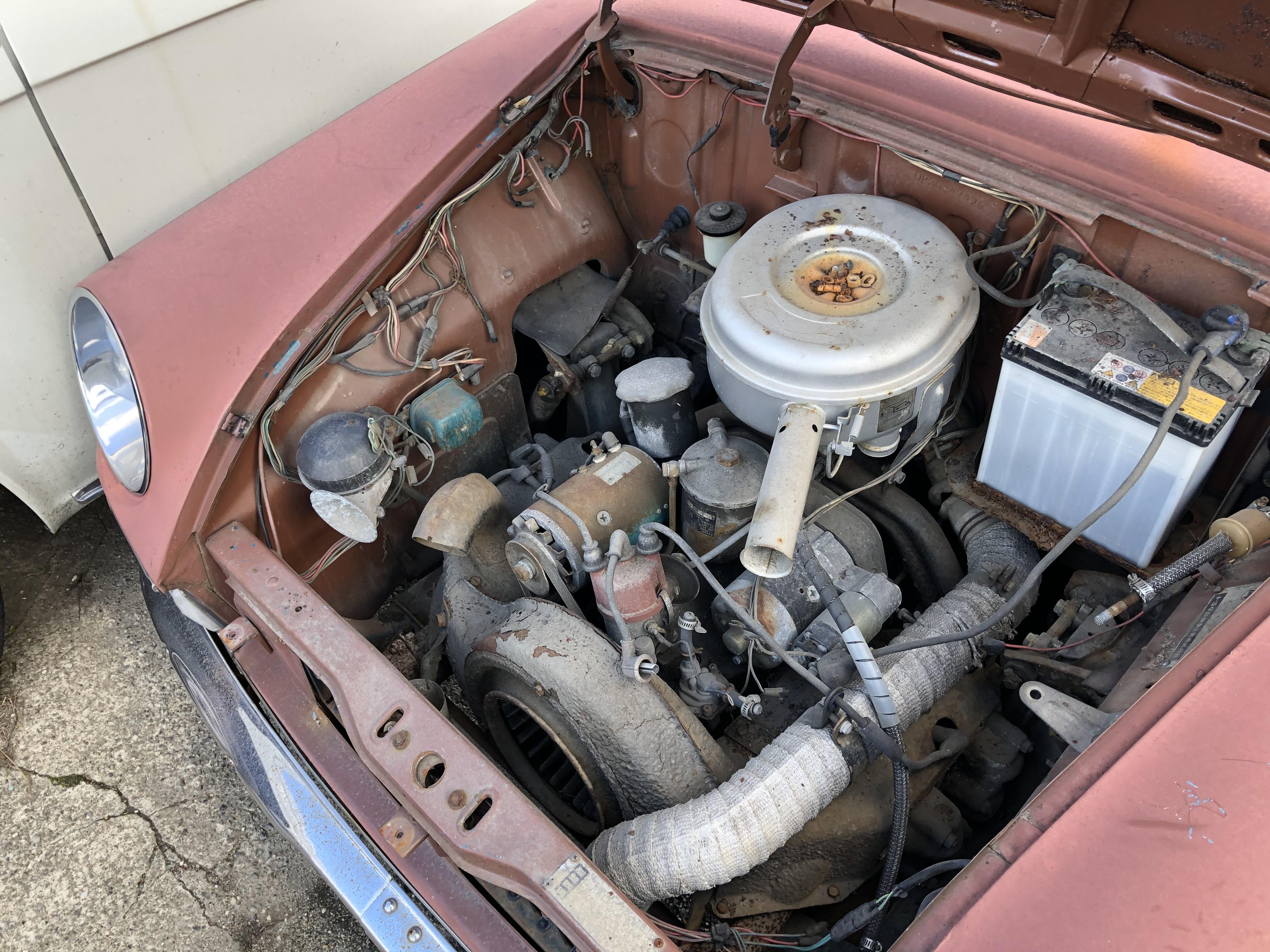
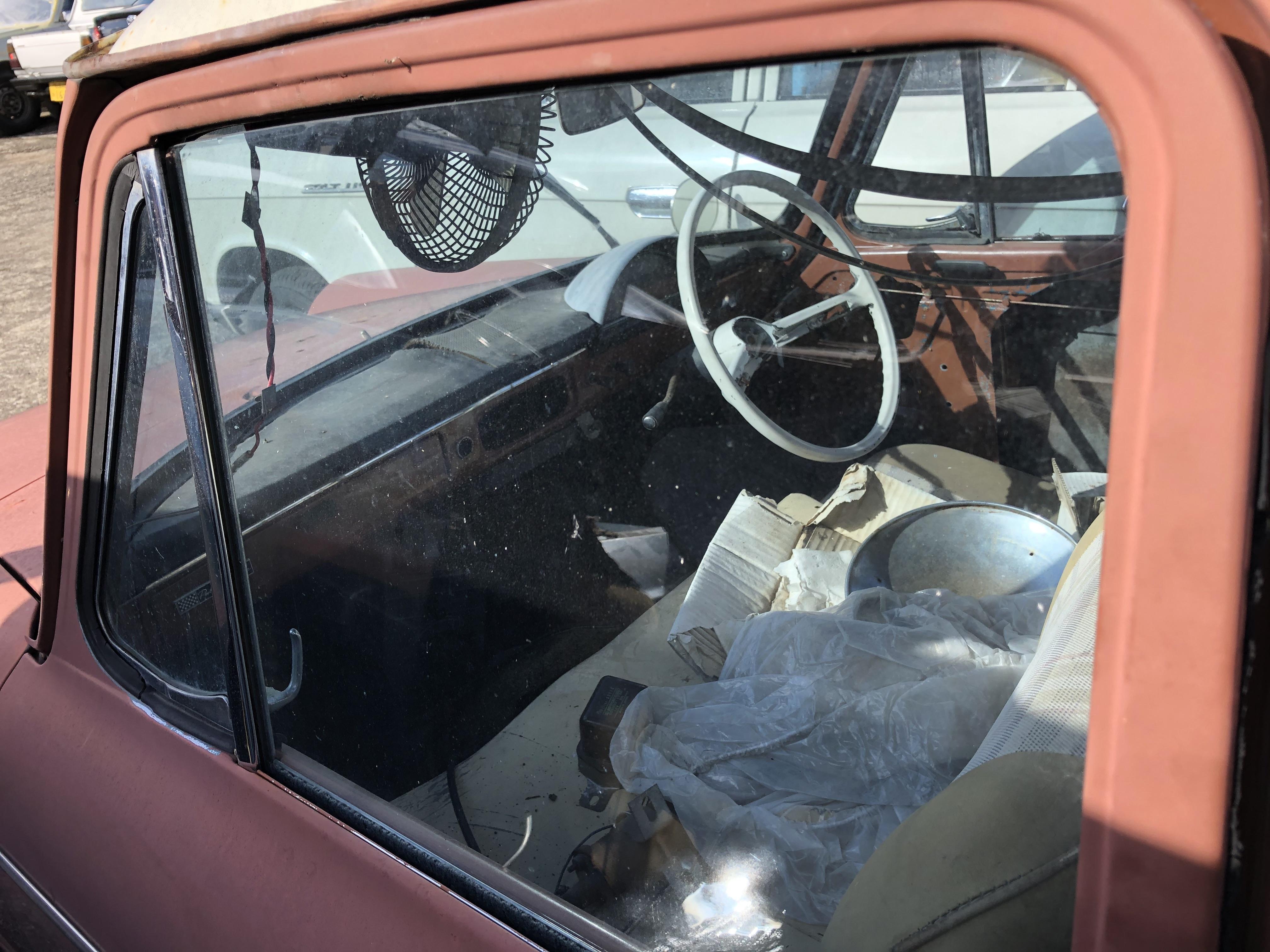
“One of our reasons for choosing the Publica was its cute round-eyed form. But when we saw the actual car, we started to wonder if we could actually pull this off,” recall Reo Saito and Tomiyasu.
“By setting the bar high, you have more to learn, and the challenge is more rewarding. It may be a tough task, but will give this Publica a go.”
With this advice and the green light from Plant General Manager Tomihisa Saito, the trial project members committed to restoring the run-down car. At last, the restoration work would get underway.
Overcoming difficulties, bringing skills together
Toyota is approaching the 90th anniversary of its first mass-produced vehicle, the Toyoda Model AA (1936). Despite this long history of car-making, the company has seen very few attempts at full-scale restoration. The project team naturally expected to have difficulty procuring and repairing parts in-house. Thankfully, they found help in the form of parts suppliers and specialty garages with experience restoring Toyota cars.
Komi
We started out with each member contributing their skills and specializations, but it soon became clear that reaching the level of restoration we hoped to achieve would not be possible on our own. At that point, we turned to Toyota’s production and development personnel, as well as people outside the company. By doing so, we were able to draw on the skills of those who make and develop prototypes, the assistance of suppliers in fabricating parts, and guidance from specialty garages on industry-standard restoration techniques. This brought our project gradually onto the right track. Our goal was to get the car back to the condition in which it first rolled off the production line. Going through drawings and various documents to check each part took time and effort, but then we could be confident that our restoration was both aesthetically and functionally sound.
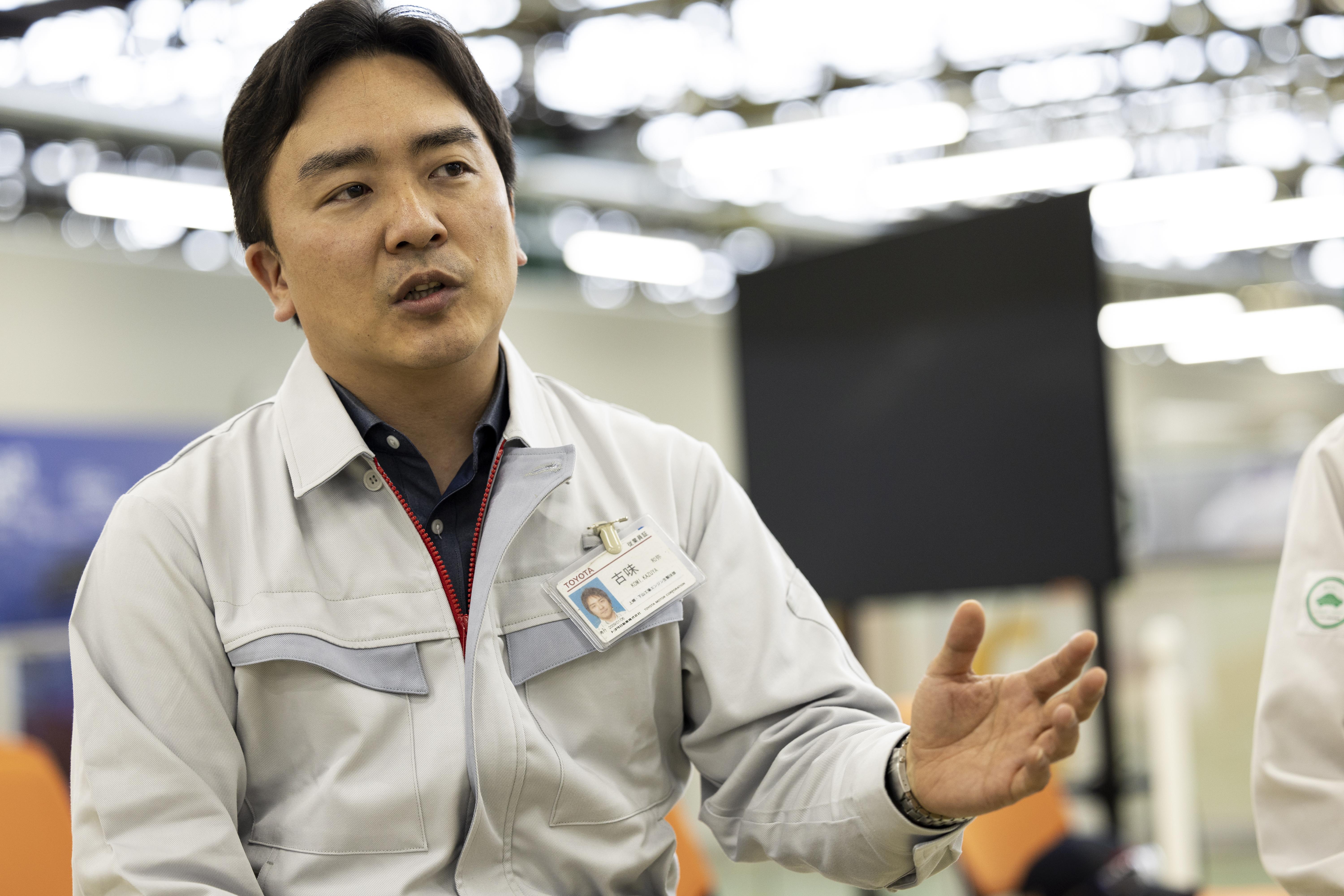
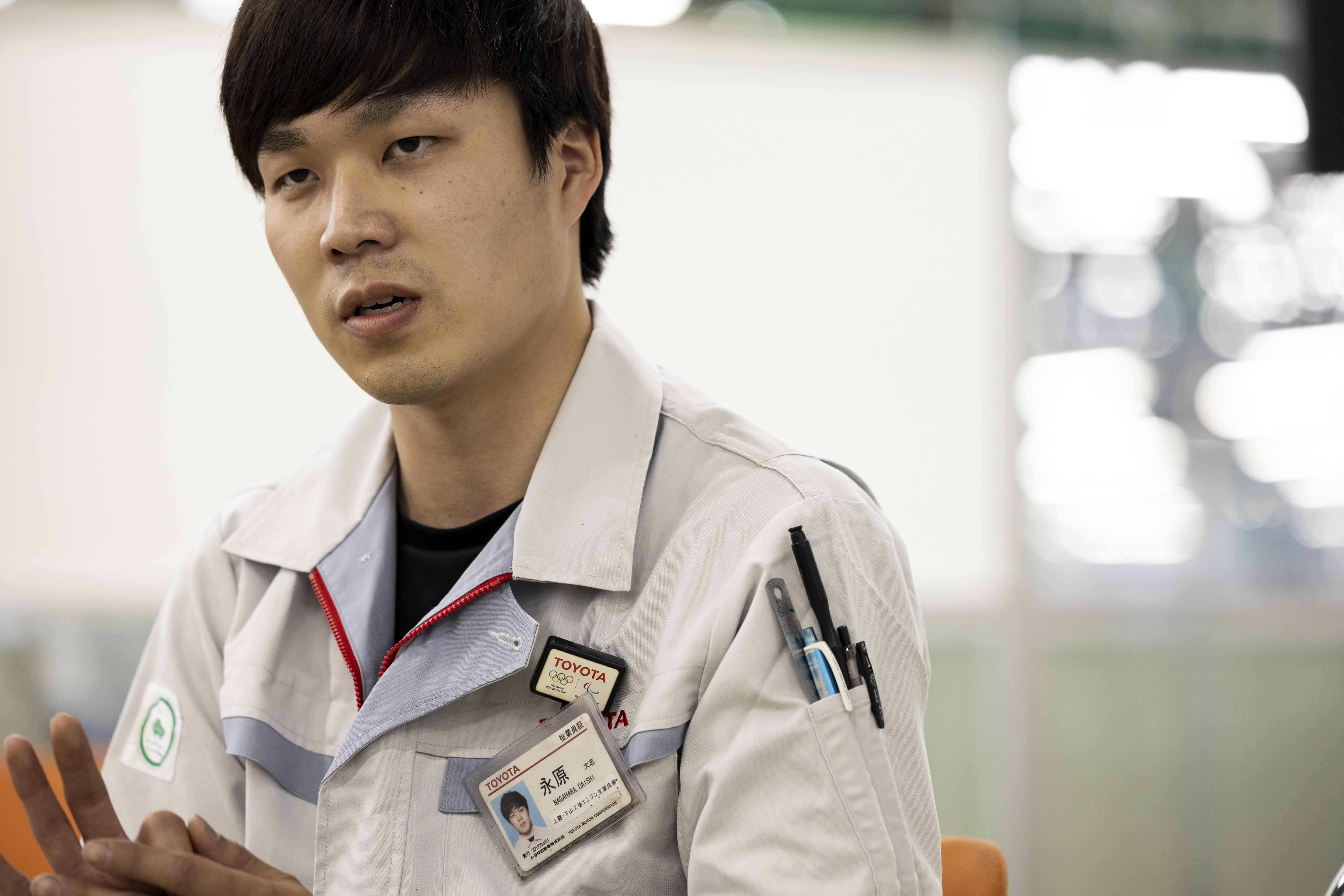
While going through the various processes to restore the Publica, the drawings and documents gave team members a sense of the commitment and unrelenting ambition of the car’s original engineers. So, how did the members actually tackle the restoration work? The videos below show the engine and transmission being assembled.
Engine assembly video
Transmission assembly video
This trial restoration project offered many insights and lessons for young members and highly skilled veterans alike.
Reo Saito
Our motivation for taking on the Publica restoration was a desire to serve those customers who want to keep driving older, beloved cars. As the project unfolded, however, we gained new perspectives. We began to see the restoration of classic cars as something that can bring together all of the wide-ranging, in-depth skills within Toyota. And we came to realize that, by pushing the limits of our own abilities, we can carry on the DNA of Toyota’s pioneers and create “ever-better cars” for our customers. As the entire company works to transform into a provider of mobility, we found that, by nurturing talent and passing on skills, restoration is an effective way to permanently establish Toyota’s identity as a place of skilled technicians. This led us to approach Executive Fellow Mitsuru Kawai about a follow-up project.
Based on this proposal, the Crown restoration project was planned by then-Tahara Plant General Manager Takahiro Imura, Kamigo and Shimoyama Plant General Manager Tomihisa Saito, and Monozukuri Development Div. General Manager Toshiaki Fukatsu. As highlighted in the first article of this series, Executive Fellow Mitsuru Kawai also came on board as a supporter and advisor of the project.
The first-generation Crown project would not have been possible without the struggles and successes of the Publica restoration team.
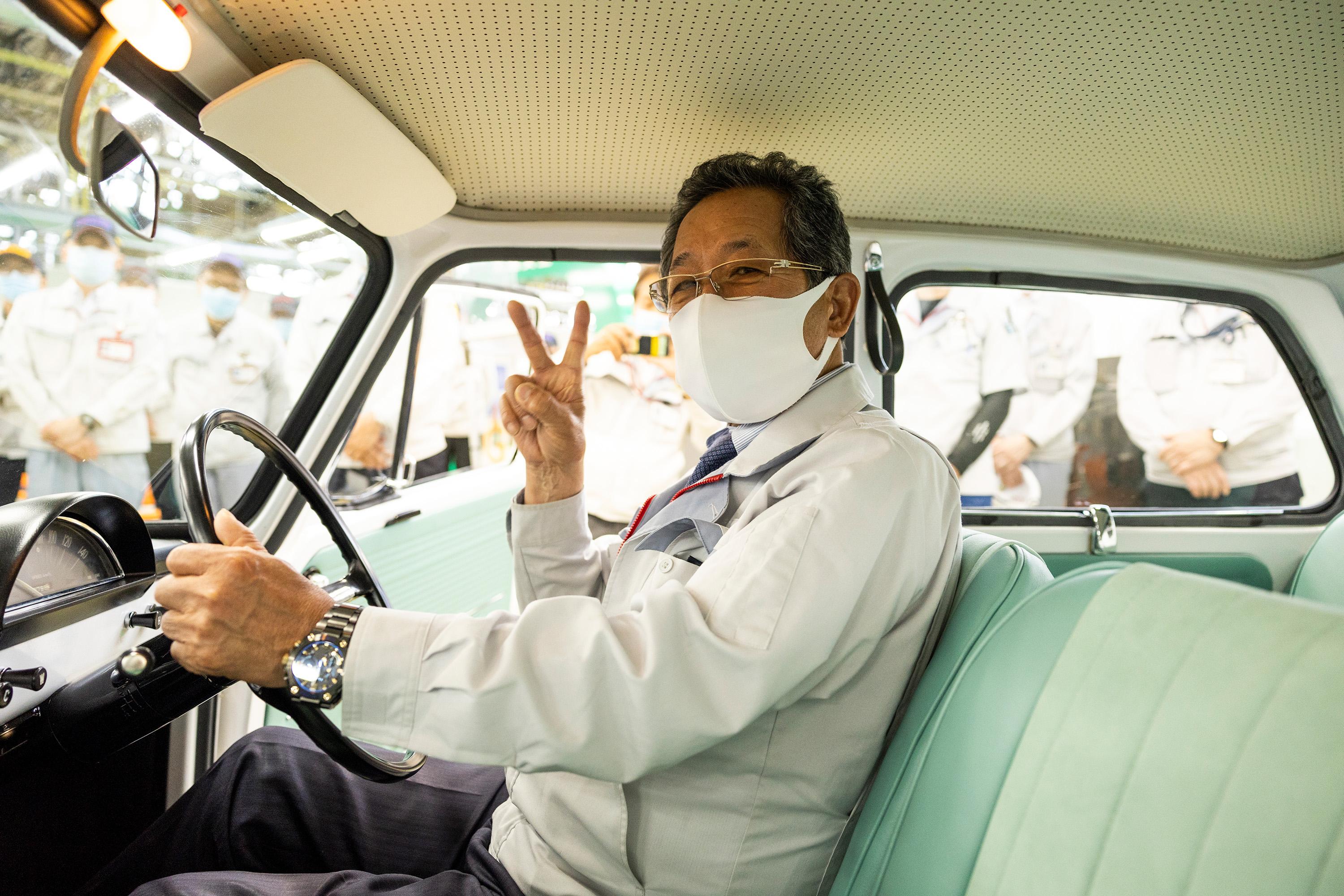
The video below shows a May 2022 event celebrating completion of the Publica restoration at Toyota’s Shimoyama Plant.

